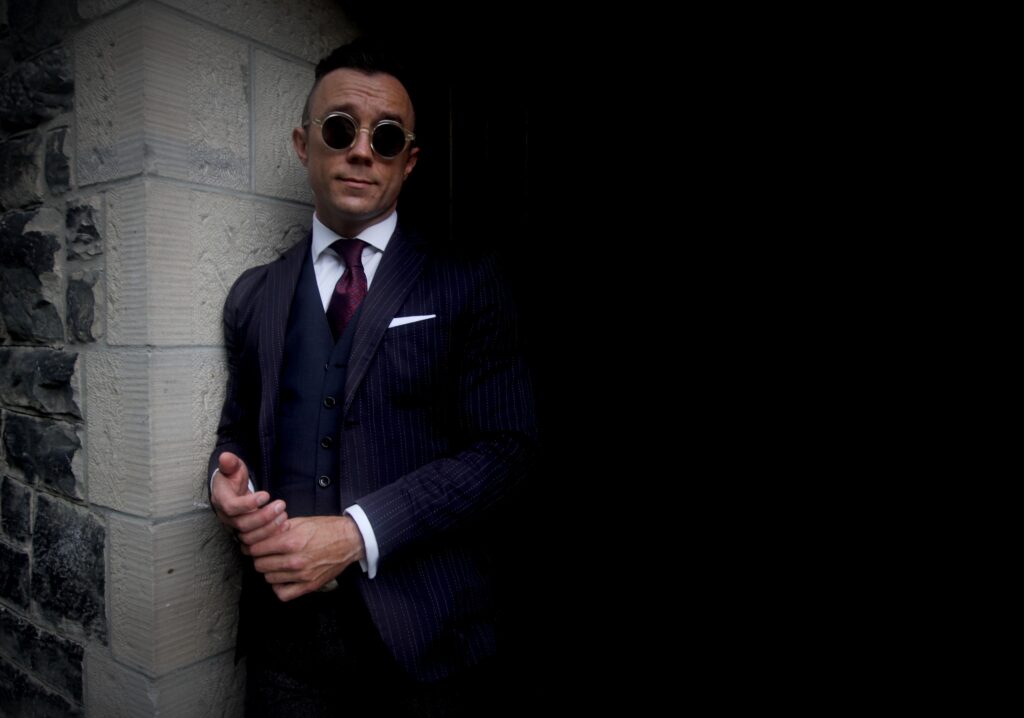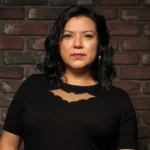The Toronto Fringe Festival is back in full force this summer. The festival will take place from July 6 to July 17, 2022, taking over 11 venues across Toronto.
Starting my festival coverage with a preview interview with Chris Graham, one of the creators of A Small Part of the Whole Story, as well as the director of the show, Graham Isador.
Chris Graham is an experienced storytelling professional and the founder of the storytelling and communications firm TellPeople. He is also the head of speaker coaching at TEDxToronto and the storyteller in residence at global technology firm Manifest Climate.
Graham Isador is a writer and theatre creator based out of Toronto. He trained as a part of the playwright unit at Soulpepper Theatre. His work has appeared at VICE, CBC, among other places.
Here Chris and Graham share some insight on working together on creating this show.
HM: I know that you are already very comfortable with public speaking and storytelling. I am curious about how these skills and your own experiences led to creating A Small Part of the Whole Story.
Chris Graham (CG): Actually, it was the other way around. I started telling stories on stage in Toronto about ten years ago. That experience eventually led to my current work teaching storytelling and communication to professionals. The stories in the show were all worked out as individual stories over a period of years. Then, five years ago, we strung them together into a single performance, just to see what would happen. And it worked! So here we are.
HM: I understand that in A Small Part of the Whole Story you are exploring ideas and themes relating to grief, loss, love, and memory. When deciding to use some of your personal experiences/stories, how easy or difficult is it to translate them into a performance like what audiences will partake in at the Toronto Fringe?
CG: This is a great question! It was both difficult and easy. Mom died about eight years ago. The year following, I did a lot of journaling. A LOT. Hundreds of pages. And most of that was raw emotion, processing feelings. Unreadable, even by me.
In the years that followed, though, a few of the experiences from that journaling started to cohere in my mind and get good responses from friends when shared. And it’s those stories that have made it onto the stage for Fringe.
HM: Graham, I am also familiar with your previous storytelling and performing shows. Not sure if you knew ahead of time the stories that Chris was planning to share in the show. Could you please share how you became a part of the A Small Part of the Whole Story?
Graham Isador (GI): Over the last few years, I’ve performed on dozens of storytelling shows across the city. Chris and I had been on several gigs together. He was always a standout performer. His work was funny and thoughtful and so well crafted. Because I’m a very petty and competitive person, It made me jealous. I wanted my work to be as good as his. I always kept an eye on where he was performing.
Before the pandemic, Chris let me know he’d been developing some of those stories into a larger piece for Fringe. Knowing I had some experience with theatre, he asked if we could get coffee and talk through some logistics of bringing the show to Toronto Fringe. From there, I kind of bullied him into letting me direct the show.
HM: Given your previous experience on and off the stage, perhaps you can share your approach for the dramaturgy and direction in A Small Part of the Whole Story.
GI: The stories Chris has put together are funny and poignant and surprising. To me, it was taking those short pieces and putting them together to touch on bigger themes. Everything was already there, it was just a matter of making sure they all worked together.
HM: Maybe each of you can briefly discuss how you decided on the stories to be shared in A Small Part of the Whole Story.
GI: The show deals with memory. It’s Chris trying to paint this picture of his mom, how important she was, and how to try and paint that for an audience. It’s a big part of the show what we choose to tell and what we don’t.
CG: These are stories that I think are good, entertaining, memorable. I hope they are, at least. There is so much to say about mom and dad, and how they felt during this time, the curation process focussed more on where are the good stories from everything we could share?
I’m trying to suggest that how we curate stories for the show is similar to how people curate their own memories. For the show, I curate stories I think will entertain the audience. In the context of your memory, you’re still curating stories, but the only person in that audience is you.
HM: I am also curious as to your decision to incorporate comedic elements, as well as live music into parts of the show. Please share a bit about this, if you can.
GI: The score of the show is really beautiful and gives the piece a new vantage point on a very familiar format. As far as the humour goes, I think Chris hits that NPR/David Sedaris thing where it can make you laugh and break your heart at the same time. When people think of grief it’s usually this singular thing, but there are all sorts of different emotions happening. And Chris captures those so well.
CG: Making the show funny is part of how we get the audience to stay with us 45-minutes. It’s a lot to listen to one person talk for that long, and jokes help to keep the audience engaged. It’s also the case that humour is an indirect form of communication—what makes a joke funny is equal parts what you say and what you don’t say—and indirect communication is a big tool that people use to talk about grief.
The music helps us amplify and complicate people’s response to the stories. If the emotional flavour gets out of synch with what I’m saying, that creates a dissonance that I can’t do on my own. This is a way to capture of talking about my mom always involves way more feelings than I can capture with words. My words end up being a small part of the emotional story.
HM: Lastly, anything else you would like to share about the show?
GI: We’re just very excited to share this with folks.
CG: What Graham said.
A Small Part of the Whole Story premieres at the Toronto Fringe on July 6, 2022. For showtime, tickets and full festival lineup, go to fringetoronto.com.
Photo credits: Graham Isador.








